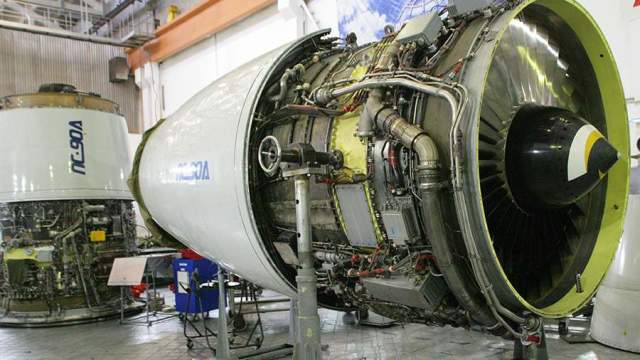The intersectoral engineering Center "Composites of Russia" of the Bauman Moscow State Technical University has created a technology for manufacturing volume-reinforced preforms of gas turbine engine elements using directional fiber laying. The development can be applied in the construction of products of the rocket and space, aviation, marine and transport industries. This was reported to Izvestia on Friday, September 17, in the MIC "Composites of Russia".
The technology uses domestic materials and an automated production system of its own design.
It is noted that the weak point of many traditional composite materials is the interlayer strength. As a rule, the composite is made of reinforcing fabric and impregnated with a binder. Such composites have a high specific strength in comparison with metals, with the exception of such characteristics as interlayer shear. The reinforcing fibers themselves are very strong, but only the binder, which has much less strength, carries the load between the layers of fabric. This problem is especially acute in products of complex shape with a complex loading scheme. Such as the blade of a centrifugal compressor of a turbojet engine. In addition, for such a product, the layout of a preform, that is, a blank made of dry reinforcing material, is a separate problem, the quality of the solution of which can greatly depend on the qualifications of the personnel.
"The technology made it possible to optimize the technological process, to ensure the exact geometry of the product without shifting the preform layers and uniform laying of the roving with different angles when laying out each layer of the preform, to improve the strength characteristics (first of all, to reduce the interlayer shift by up to 15%), as well as to reduce their cost, "said Vladimir Nelyub, director of the MIC Composites of Russia at Bauman Moscow State Technical University.
The novelty is that the preforms of the blades are obtained by automated stitching of carbon fibers on a water-soluble substrate based on polyvinyl acetate. At the same time, the optimal technological parameters of the stripe are selected to achieve the best elastic-strength characteristics of the finished products. These distinctive features are not implemented in any of the existing technical solutions."
Another key feature of the process is that the operator's participation is limited to loading the control program into the CNC embroidery machine, starting and stopping the operation, as well as monitoring its progress.
Currently, Russia does not have its own production of serial small-sized GTE for light helicopters, airplanes and UAVs. This segment of the domestic market is occupied by foreign manufacturers. The so-called additive technologies, to which this development belongs, are one of the main directions of the development of the domestic engine industry.
In July, the Ministry of Industry and Trade developed a project to create "competitive products of the aviation industry". The project, which should be included in the strategy of socio-economic development of the Russian Federation until 2030, provides for the construction of 735 new civil aircraft, which will need to spend 1.84 trillion rubles.

